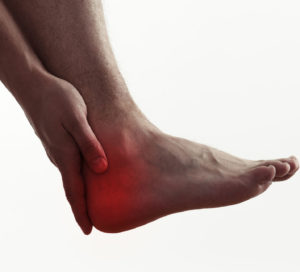 Pain that develops in your heel that is not a result of a heel bruise can often be traced back to a problem with your plantar fascia. However, there are a number of different conservative care options you can try on your own to see if pain and discomfort subsides. We take a look at five such techniques in this blog.
Pain that develops in your heel that is not a result of a heel bruise can often be traced back to a problem with your plantar fascia. However, there are a number of different conservative care options you can try on your own to see if pain and discomfort subsides. We take a look at five such techniques in this blog.
5 Tips For Plantar Pain Relief
Here are five things to try if you’re dealing with pain in your heel.
1. Change Your Shoes – Your shoes may not be giving your heel and arch the support it needs, and that could be stressing your plantar fascia. Find a shoe the contours to your arch and has plenty of support, and consider having them fitted by a professional. If you have high arches, you may also benefit from wearing these supportive shoes inside your home, as walking barefoot doesn’t offer much support.
2. Stretch and Rest – One of most common agitators of plantar heel pain is stress and overuse, which can be countered with some good old fashioned rest and relaxation. However, don’t just keep your foot idle while it’s resting. Pair rest from exercise or activity with a stretching routine that you complete a couple of times each day. This will help keep the plantar fascia from pulling or tightening up, which prevents against pain and discomfort when you are moving.
3. Ice – Ice or cold treatment can help prevent against inflammation in the area that is causing pain. You can put an ice pack on the floor and rest your foot on top of it, or you can freeze a water bottle and roll your foot back and forth over the bottle for 5-10 minutes. This second technique also helps to stretch the fascia a little, which helps to keep it loose.
4. Night Splints – In more extreme cases, a night splint may help. These devices help to stretch your plantar fascia when you’re in bed to help keep the fascia from contracting.
5. Visit A Foot Specialist – If the above conservative care techniques fail to provide you with adequate relief, contact a foot specialist in your area. They’ll be able to take a closer look at your foot and figure out exactly what’s causing your heel pain. They may be able to prescribe some more hands-on conservative care techniques, or they can perform a minimally invasive operation to take care of the problem.